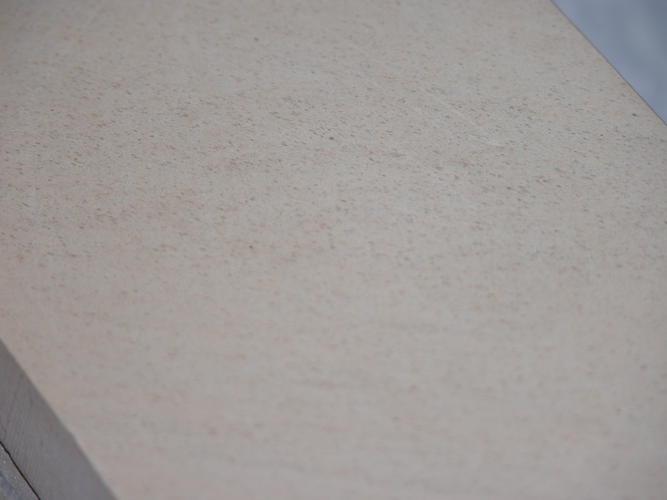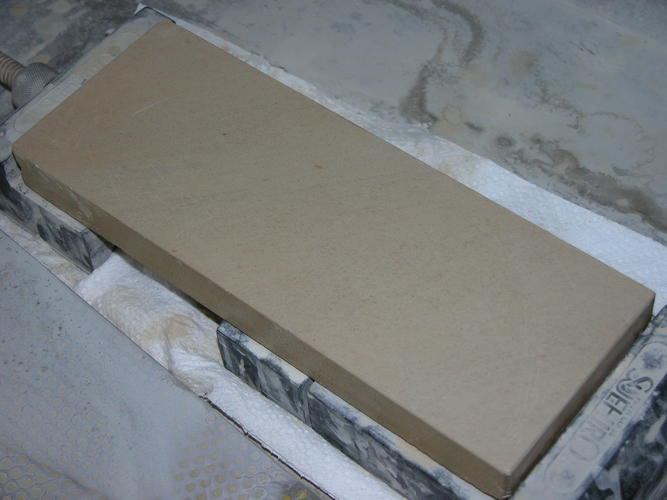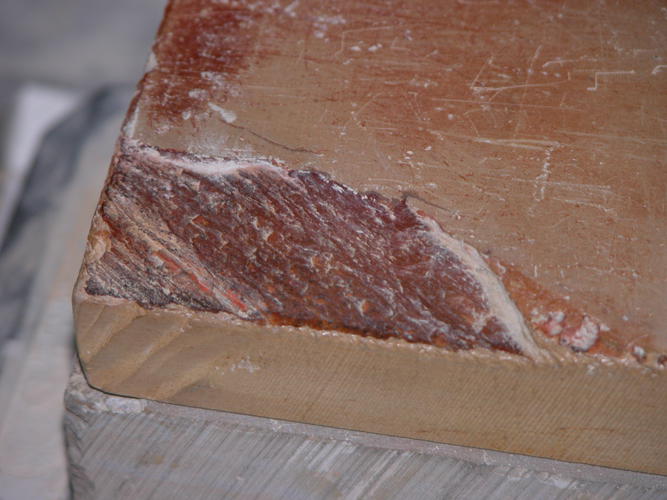Results 1 to 7 of 7
Hybrid View
-
04-19-2016, 01:39 AM #1Junior Member

- Join Date
- Apr 2016
- Location
- Bay Area, USA
- Posts
- 5
Thanked: 0 J-Nat ID
J-Nat ID
Hey SRP fellows,
First post here and I was hoping I could get some opinions on this J-nat.
From research, and upon purchase, I have had a good feeling it is Kiita. It swarfs fairly quickly and has a beautiful yellow-ish mud. It is sealed all around and seems to have been removed from a base, revealing some Kawa that might help anyone ID it.
I obviously WANT this to be a Nakayama (hehe), but it seems to be highly unlikely because there are no stamps... The previous owner didn't know either.
I believe this stone is of higher quality because there are no cracks or anything that get in the way of honing and has darker needle-like pattern throughout. Maybe some light karasu..
Dim.: 20 x 7.5 x 2
Thank you for any opinions!
cenc



Last edited by cenc; 04-19-2016 at 03:47 AM.
-
04-19-2016, 02:31 AM #2

Cannot help with the id but, she's a beauty!
-
04-19-2016, 02:53 AM #3Junior Member

- Join Date
- Apr 2016
- Location
- Bay Area, USA
- Posts
- 5
Thanked: 0
Thanks, and it is a joy to sharpen high carbon steel on!
-
04-19-2016, 02:57 AM #4Senior Member




- Join Date
- Dec 2012
- Location
- Egham, a little town just outside London.
- Posts
- 3,857
- Blog Entries
- 2
Thanked: 1083
Welcome to SRP cenc.
Hard to tell from the photos as it doesn't look yellow on my screen...
Im no jnat connoisseur but from your description that could well be a Nakayama kiita.
Kitta just means yellow, and the kawa skin, if it has sparkles in it, definitely indicates Nakayama.
For sound advice PM members Alx or jnats whom are extremely knowledge able on jnats.
-
04-20-2016, 02:03 PM #5

cenc
That is a very uniform looking stone, which is good, it has all it's corners and an even tone and complexion. The kiita stones as they are graded in Japan are from a deeper tomae strata and are hard and do not self slurry. There are several other strata where some "yellow" stones from these mines are found, and the most common are from the akapin strata which happens to be the shallowest and thus softer and these will self slurry. The stones from the akapin are usually referred to as iro-mono or colored things (things being stones in this case).
The ki-ita (ki=yellow, ita=board/layer) from the tomae layers are a dull and mellow yellow, the iromon yellow from the akapin have a certain acid or brigher yellowish look that looks a bit gaudy, and the slurry can be a brighter yellow.
A good hard deeper tomae strata kiita can be a true finishing stone while the iromono from the akapin are normally thought of as a pre-finishing stone although they can be used as a finisher for razors under running water so that the slurry is rinsed away before it has a chance to build up. If your black swarf even after a lot of heavy strokes is floating in clear water this would be an indication of a harder stone, if the swarf is part of a slurry and is muddy then a softer stone.
If you want me to look and test your stone you can just drive up to Sonoma, comparing two stones side by side is very telling. In the meanwhile here is one photo of 3 of these very hard dull yellow stones that are called kiita in Japan.
good luck,
Alex

-
The Following 3 Users Say Thank You to alx For This Useful Post:
Euclid440 (04-20-2016), lz6 (04-20-2016), markbignosekelly (04-20-2016)
-
04-20-2016, 03:04 PM #6

Alex, thank you for stopping by to provide an answer for cenc. Personally, if I were cenc, I would be in my car headed to your place.
Bob
"God is a Havana smoker. I have seen his gray clouds" Gainsburg
-
04-21-2016, 04:31 AM #7Junior Member

- Join Date
- Apr 2016
- Location
- Bay Area, USA
- Posts
- 5
Thanked: 0
Alx, thank you so much for your quick response. Your knowledge tennen toishi is something I strive for! I'll try to get some pictures of swarf up if I get the chance. Cheers!
cenc


 11Likes
11Likes
 LinkBack URL
LinkBack URL About LinkBacks
About LinkBacks






 Reply With Quote
Reply With Quote
